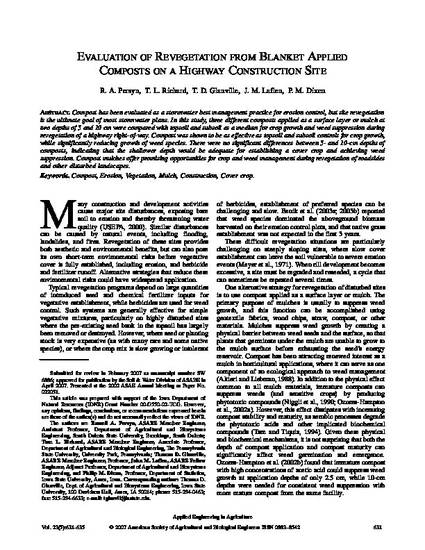
Compost has been evaluated as a stormwater best management practice for erosion control, but site revegetation is the ultimate goal of most stormwater plans. In this study, three different composts applied as a surface layer or mulch at two depths of 5 and 10 cm were compared with topsoil and subsoil as a medium for crop growth and weed suppression during revegetation of a highway right-of-way. Compost was shown to be as effective as topsoil and subsoil controls for crop growth, while significantly reducing growth of weed species. There were no significant differences between 5- and 10-cm depths of composts, indicating that the shallower depth would be adequate for establishing a cover crop and achieving weed suppression. Compost mulches offer promising opportunities for crop and weed management during revegetation of roadsides and other disturbed landscapes.
Available at: http://works.bepress.com/philip-dixon/14/

This article is from Applied Engineering in Agriculture 23, no. 5 (2007): 631–635.